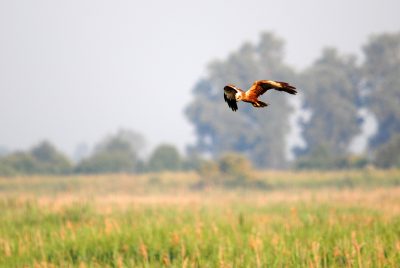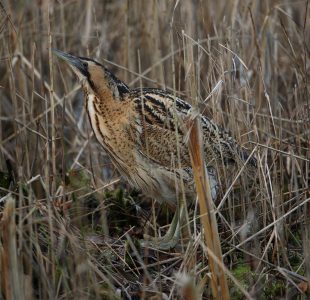Restoring a reedbed – why and how?
A diary entry from Saltscape Trainee Laura, working with Cheshire Wildlife Trust.
On behalf of the Saltscape Partnership Cheshire Wildlife Trust are looking to undertake habitat management works at a Local Wildlife Site called Big Wood Lagoon. This site is located on an old dredging lagoon for the Weaver Navigation. Big Wood Lagoon is bordered by a lovely area of woodland to the north, which is carpeted with wild garlic and bluebells in the spring, and the Weaver Navigation to the south. It has a tall bund running around the edge and inside lies a beautiful expanse of reedbed, with a lagoon at its centre. Reedbeds are formed by stands of just one plant, the common reed – their golden, feathery flower spikes can be seen from late summer onwards.

3 CWT Blog_Marsh Harrier_Amy_Lewis
I visited the site a few weeks ago and it was a fantastic sight. The reeds were blowing in the breeze, sheltering the lagoon from the elements, with a heron standing completely still at the water’s edge, waiting for its prey to swim nearby. The reason for our visit was to install some dipwells on site, which we will use to monitor fluctuations in ground water levels; the information we gather will then guide the restoration and management of the reedbed.
So why are we bothering to save this little reedbed in the Weaver Valley? Well, to begin with, there are only 5,000 hectares of reedbeds in the UK (roughly the size of Oxford). In addition, many important reedbeds are found on the coast of eastern England, where sea-level rise as a result of climate change is predicted to lead to the loss of significant areas of habitat. Also, not only is the habitat rare, but so are several key species which are dependent upon it. Reedbeds are among the most important habitats for birds in the UK – they support many breeding birds including the nationally rare bittern and marsh harrier.

Reedbeds have been lost as a result of water abstraction and drainage, and intensive agriculture. Many areas have also declined due to poor management, including the decline of traditional uses for reed, leading to scrub encroachment. We would aim to reverse these trends at Big Wood Lagoon, by removing encroaching scrub and re-wetting the reedbed through the manipulation of water levels on site.
We are only at the start of a long process. But it is exciting to think what a difference we could make by stopping this reedbed from drying up and disappearing. You never know, a few years down the line, this reedbed may be attracting such rarities as the bittern – a striking member of the heron family which has made the nearby Marbury Reedbed its winter home over the past few years.
